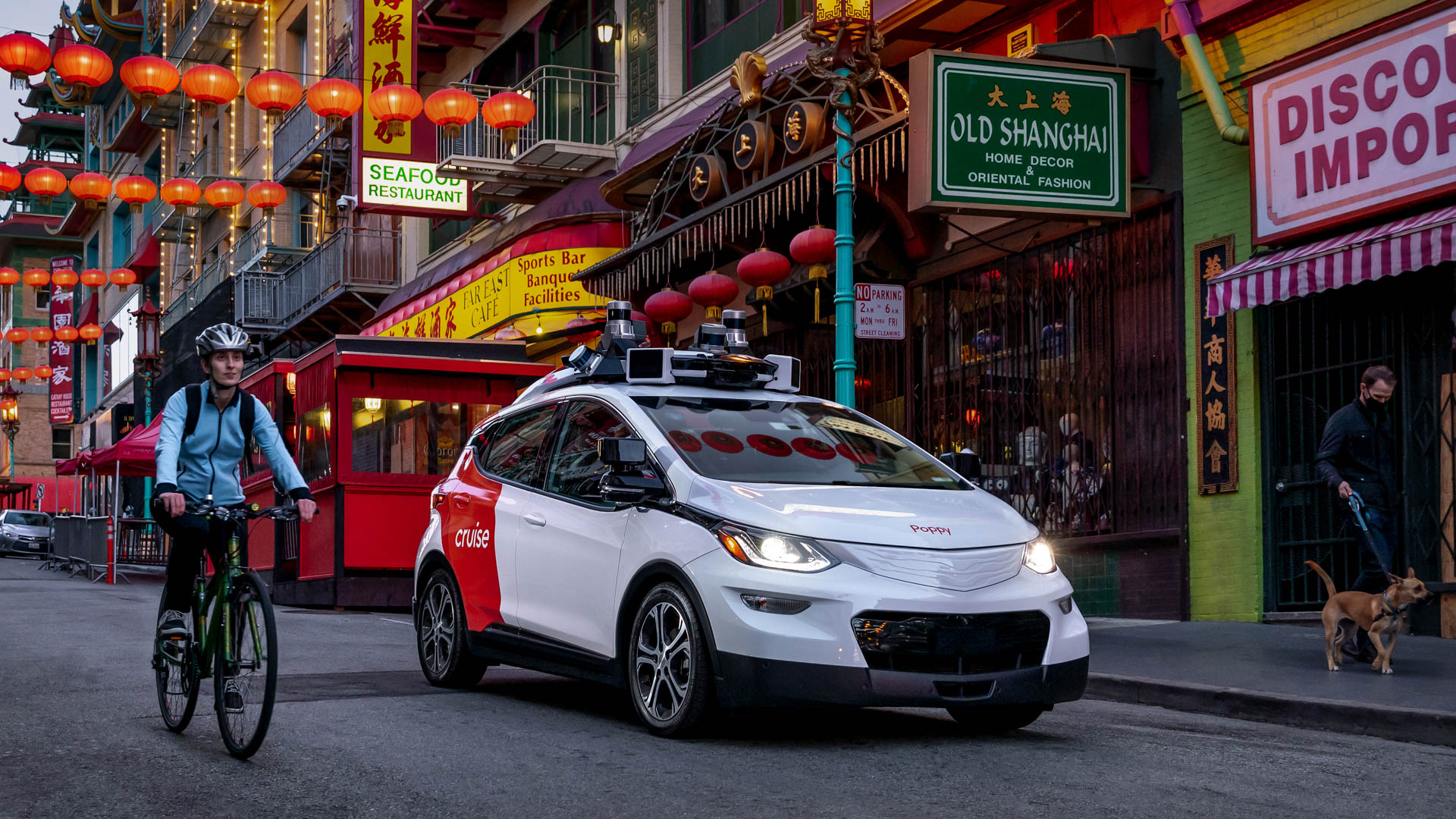

As of Thursday, June 2, GM’s self-driving car service Cruise, secured a permit to charge customers for driverless car rides in San Francisco. With federal regulations moving too slowly, self-driving services such as Cruise, Google’s Alphabet Inc., and Waymo have been turning toward state and even city legislators to help push driverless car laws forward. According to Reuters, Cruise just took a big step forward in San Francisco and will have up to 30 driverless Chevy Bolts charging customers for rides in just a couple of weeks.
The California Public Utilities Commission (CPUC) approved Cruise’s permit in a 4-0 vote, beating out Alphabet and Waymo for San Francisco’s driverless ride-hailing privileges. Previously, Cruise and Waymo vehicles had been testing self-driving vehicles in San Francisco but they were either for employees or free public testing and almost always had a safety driver behind the wheel in case of emergency. Now, Cruise can actually charge customers, as a fully-functioning, driverless ride-hailing service.
“This resolution marks another important step in that effort,” said CPUC commissioner Commissioner Clifford Rechtschaffen. “It will allow our staff to continue to gather very important data that will support the development of future phases.”

There will be some pretty strict limitations on when and how Cruise’s driverless taxis will work. Not only will they be limited to 30 miles per hour, they will be restricted from highways, geo-fenced into areas that avoid downtown, restricted from driving in harsh weather such as heavy rain or fog, and will only be allowed to operate between the hours of 10 p.m. and 6 a.m. There were some concerns from local police and fire departments about safety, after incidents of self-driving Cruise test vehicles causing safety hazards, such as blocking a firetruck during a three-alarm fire and allowing passengers to exit the car in the middle of the street.
Another recent incident saw a self-driving Cruise car stop unexpectedly, causing a cyclist to crash into it, sustaining injuries. The cyclist’s lawsuit was settled out of court, last month. There were also incidents where Cruise vehicles were unable to drive outside of lane markings, which caused issues with parked trucks or cyclists on the side of the road. However, Cruise has apparently fixed all of those issues well enough for the CPUC board to approve its permit.
While there are still questions surrounding how a completely driverless car can respond to unpredictable human behavior, Cruise’s cars apparently lean toward caution. Cruise claims its vehicles are programmed to understand the unpredictability of human drivers and drive incredibly defensively.
We’re likely still a long way from fully-functioning driverless taxis, which are able to drive everywhere and anywhere entirely on their own. However, this is the first of many steps to reach that point and San Francisco residents should be able to partake in some of the city’s first official robo-taxi rides in just a few weeks.
Got tips? Send them to nico.demattia@thedrive.com